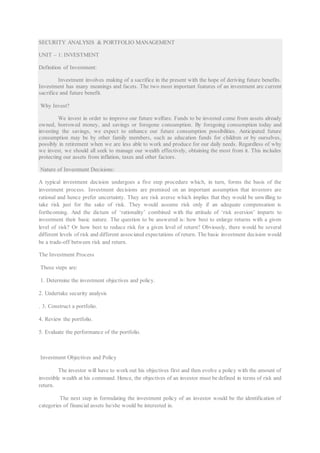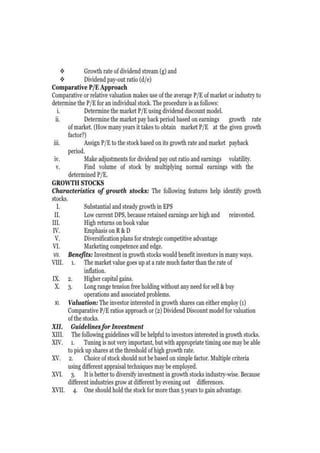Investment involves sacrificing current consumption for future benefits. The investment process involves 5 steps: 1) determining objectives and policy, 2) security analysis, 3) portfolio construction, 4) review, and 5) performance evaluation. Investment decisions are based on balancing risk and return. Risks include systematic/market risks from external factors and unsystematic/specific risks that can be reduced through diversification. Systematic risks include market, interest rate, and purchasing power risks from factors like wars, recessions, and inflation.





















